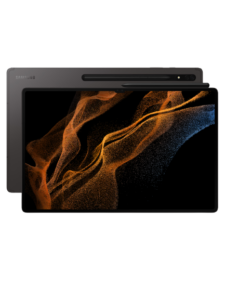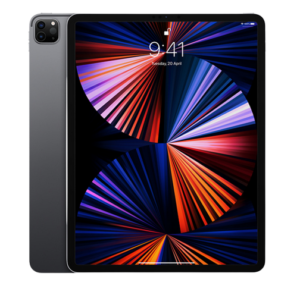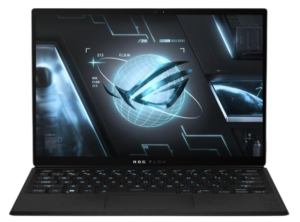The Samsung Galaxy Tab S8 Ultra is a big tablet that takes even bigger swings.
The Samsung Galaxy Tab S8 Ultra has ambitions as big as its AMOLED screen
What does it really mean for a tablet to be pro-grade? Apple has been talking up the iPad Pro for years as the tablet that’s good enough to replace your laptop. As you'd expect, it hasn't taken long for Samsung to debut its counterpoint: the newly-minted Samsung Galaxy Tab S8 Ultra.
However, for those who have been brave enough to take the plunge into full-time tablet computing, the results have remained stubbornly mixed. The advent of iPadOS and the supremacy of Apple's own silicon have done a lot for those looking to make their next tablet more than just a dedicated content consumption device.
Unfortunately, these breakthroughs have done little to erode the familiar limits and caveats that come with hardcore and high-end tablet use cases. Regardless of whether we're talking about this year's crop of premium tablets or that of five years ago, the answer to the question of whether a tablet can displace or replace a conventional PC is often and almost entirely down to the work you do and whether or not that flow can comfortably exist within either the Android or iPadOS ecosystem.
If your work-life can't neatly fit into the contours of either, it kinda doesn't matter how much more powerful this year's Galaxy Tab, Huawei Matebook or iPad Pro is. Year-on-year design tweaks and performance enhancements are always nice, but there's a fundamental disconnect between these advances and the issues involved with weaning would-be tablet users into actual ones.
Even in workplaces where the device demography has become more diverse, tablets still struggle to make the leap from consumption and play to creation and productivity.
The Galaxy Tab S8 Ultra can’t fix these big fundamental problems with the modern tablet ecosystem, but boy is it big and boy can it try.
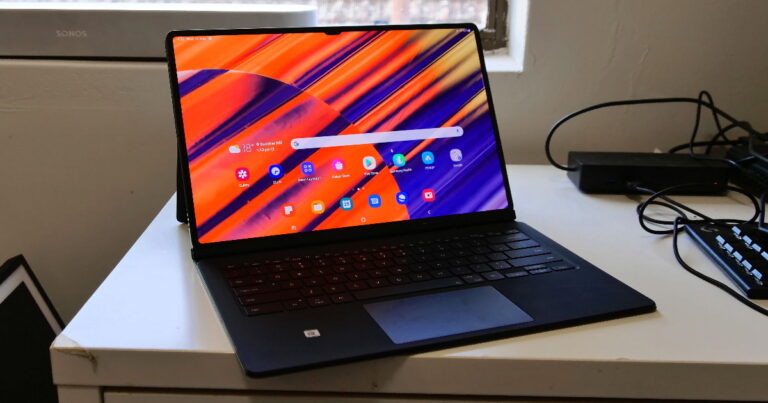
How much does Samsung Galaxy Tab S8 Ultra cost in Australia?
The Samsung Galaxy Tab S8 Ultra weighs in at an Australian recommended retail price of $1,799 for the baseline (Wi-Fi) model. Snagging the version of the Tab S8 Ultra with 256GB of storage (up from 128GB seen in the standard model) starts slightly higher at $1,999.
If you're after the version of Samsung's latest top-of-the-line tablet with 5G connectivity, you're looking at $1,999 for 128GB of storage or $2199 for 256GB.
With the standard Tab S8 and Tab S8+ landing at $1,099 and $1,499 respectively, the Tab S8 Ultra is the most expensive tablet in Samsung’s current lineup of premium Android tablets. It's also pricier than Apple's 12.9-inch iPad Pro, which starts at $1,649 for 128GB of storage or $1,799 for 256GB.
That said, you can save some of the cost on the device by shopping smart. Check out the table below for a sense of how local pricing for the Samsung Galaxy Tab S8 Ultra sits across each retailer.
The Samsung Galaxy Tab S8 Ultra is also available on a plan through Optus and Telstra. Check out the widget below for a round-up of the most popular plans for the device.
Samsung Galaxy Tab S8 Ultra - Design and Features
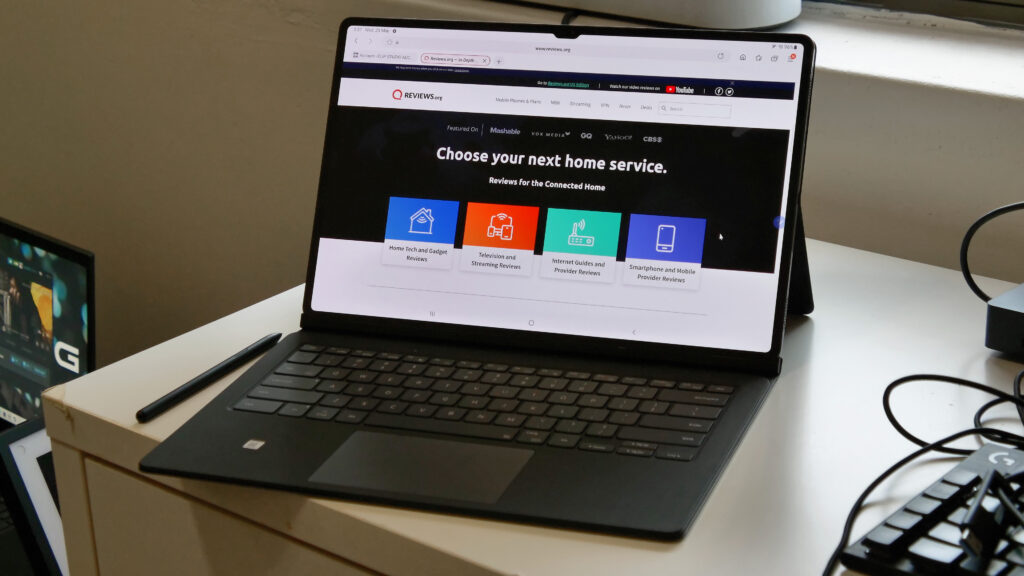
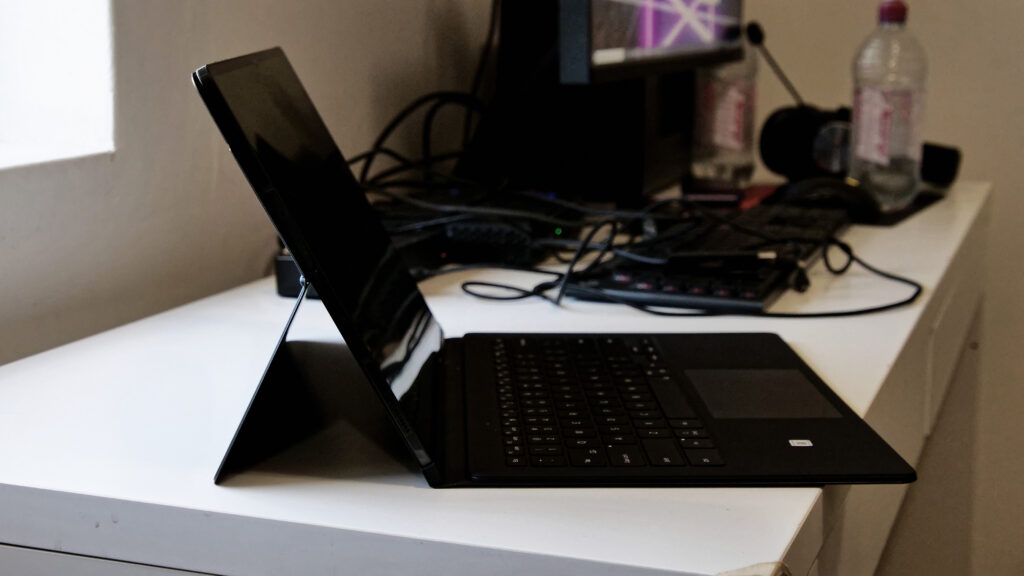
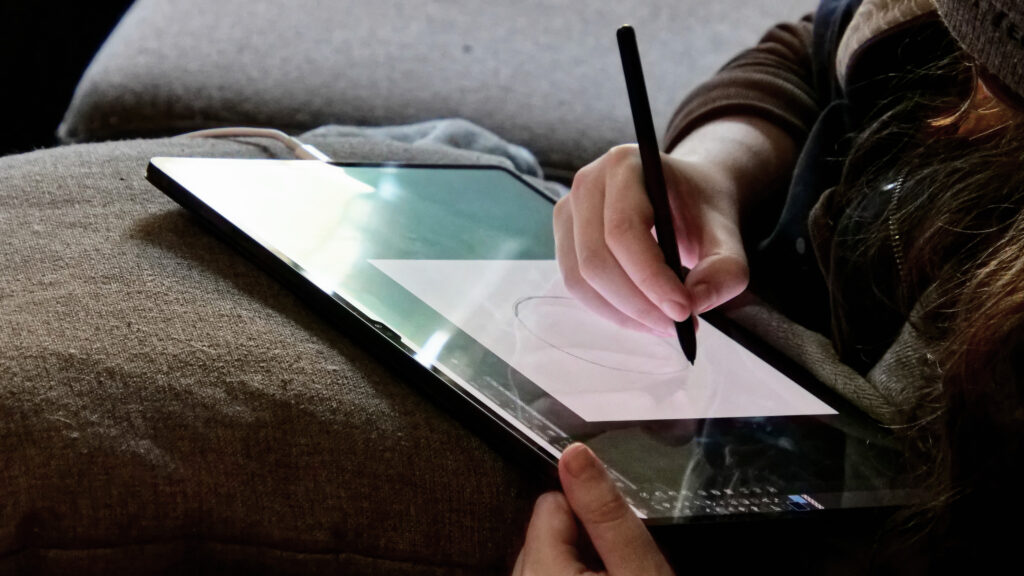
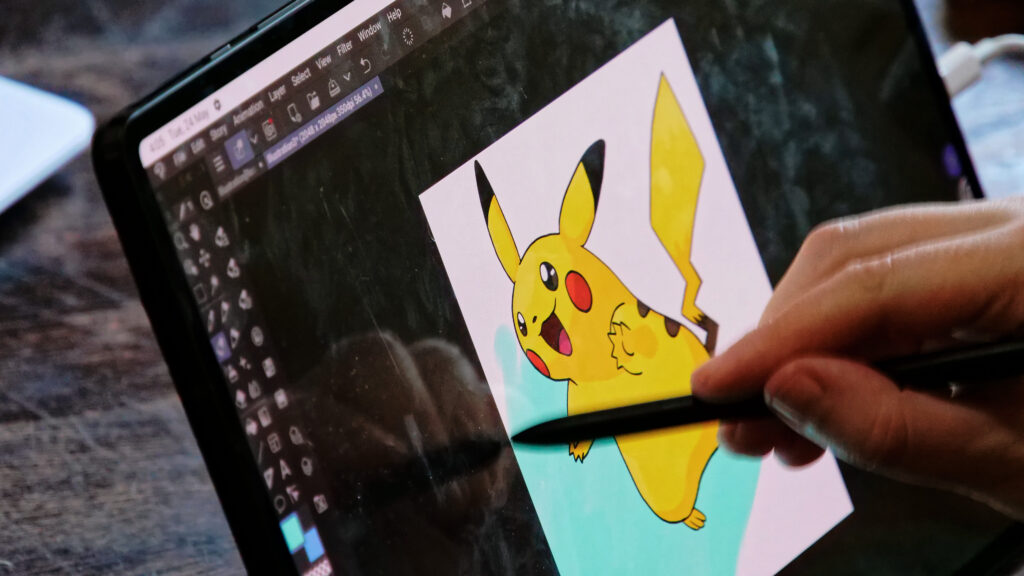
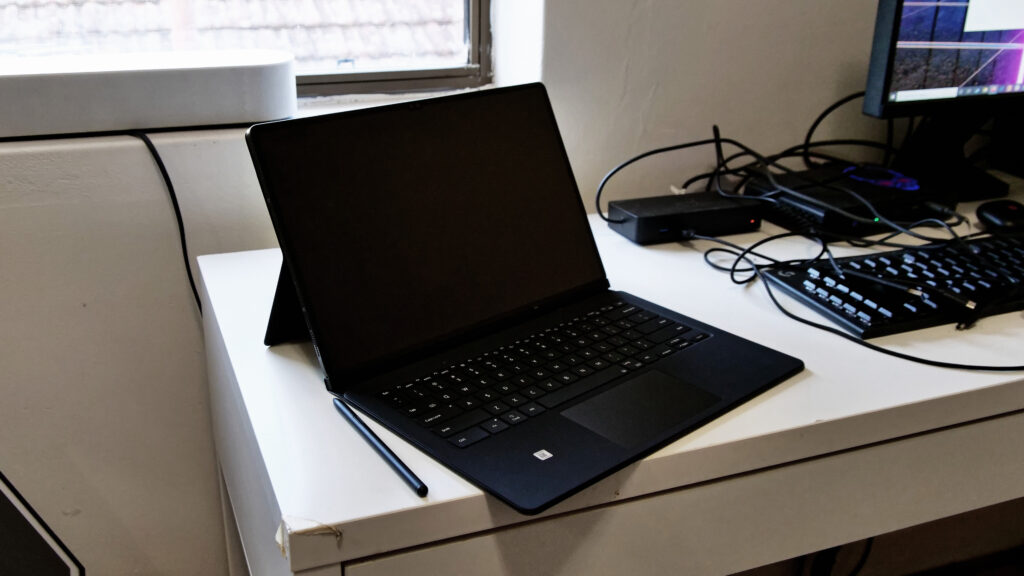
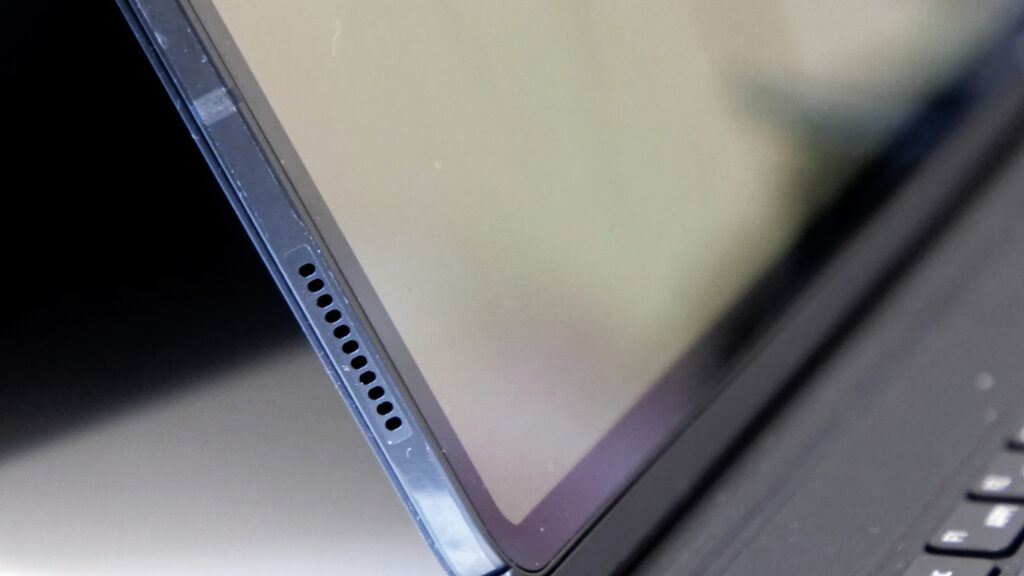
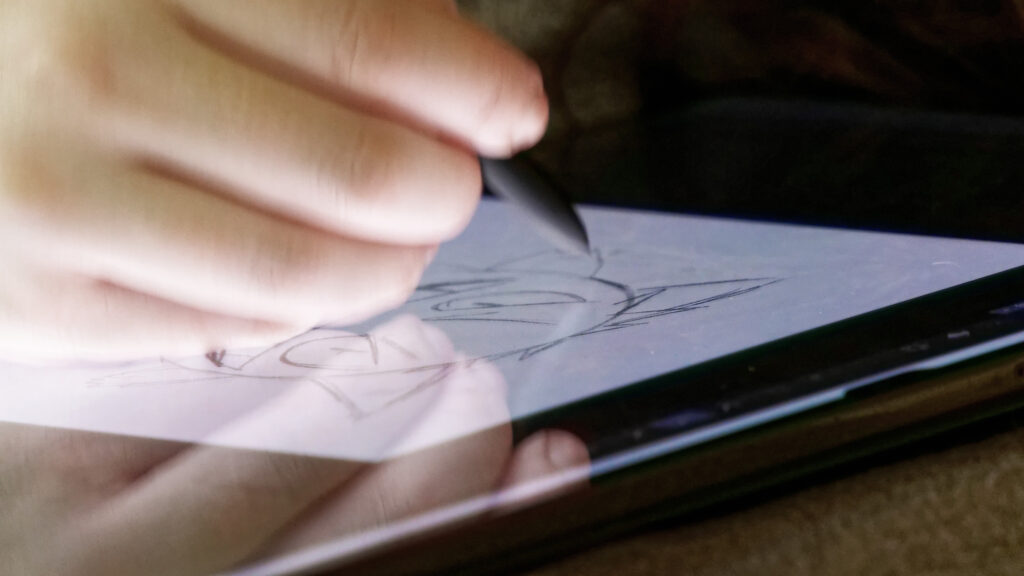
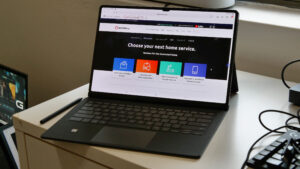
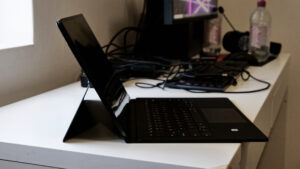


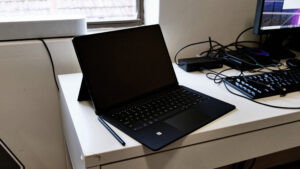


Envisioned as a power-user friendly complement to the new Galaxy S22 Ultra, the Samsung Galaxy Tab S8 Ultra isn't "arguably" defined by size. It's obviously defined by it, with a downright-enormous 14.6-inch AMOLED display that easily eclipses the pixels-per-inch offered by even Apple's largest iPad Pro devices.
In fairness to Samsung, there's a lot to talk about here beyond this display. Like the rest of the Galaxy S lineup, the Tab S8 Ultra comes kitted out with all the usual premium features. There are four Dolby Atmos speakers that produce clear sound, 45W charging via USB type-C that make charging a treat, and a fingerprint scanner built into the display for those seeking added security. Unlike its more compact cousins however, the Tab S8 Ultra is only available in a single colour variant: Dark Grey.
But in fairness to this device, everything that's good (and bad) about the Galaxy Tab S8 Ultra feels inextricably tied to the size of the screen on it.
While screens this large are fairly common for laptops and 2-in-1s, most other tablet manufacturers tap out at eleven or twelve inches. Even if it's hard to shake the suspicion that Samsung thought more about whether they could go this big than whether they should, I found that the sheer volume of screen you have to work with here invited me to think bigger when it comes to the ways in which I'd typically use a tablet like this one.
You’re certainly paying extra for it, so what is a tablet with a screen this big actually good for?
The answer, for better or worse, is largely what you'd expect. For all that Samsung’s latest tablet tries to push on the boundaries of what’s possible with a tablet, its subject to many of the same limits as smaller ones.
Web browsing, video streaming and applications that can make full use of the Tab S8 Ultra’s S-Pen tend to benefit the most. Having a bigger screen makes writing or drawing with the S-Pen significantly more comfortable than it would be otherwise and while I didn't do a huge amount of drawing with the S-Pen stylus, my partner did and went so far as to call it the best digital drawing setup she's used to date.
With a display that makes the one on the iPad Pro feel cramped by comparison, Samsung is pitching the Galaxy Tab S8 Ultra as the perfect canvas for multitaskers. While the actual functionality is a little clunkier and less clean than that seen on iPadOS-based tablets, the fact that you can rely on a Windows-style interface for multitasking via DeX mode does work in Samsung's favour.
Another detail here that speaks to the highly-paid hybrid workers that Samsung is trying to woo with the Tab S8 Ultra is the second 12-megapixel ultra-wide lens to the front-facing camera setup. Rounding out a 12-megapixel wide lens, this camera promises to make video calls a little more cinematic and a little less static thanks to auto framing. Pinched from Samsung's foldable range, this feature basically works the same way as Apple's Center Stage does. However, for reasons that are opaque, the feature doesn't work in DeX mode.
Gaming (at least, without the aid of a wireless controller) and apps that aren’t optimised for the larger screen on the Tab S8 Ultra are another matter. The exact issues vary, from text-sizing to awkward touch controls. There's a physical strain associated with holding this device here that you don't get with smaller tablets and even the best-looking mobile games can look a little stretched out on the Galaxy Tab S8 Ultra. On a screen this large, even modest graphical blemishes become hard to miss.
Samsung Galaxy Tab S8 Ultra - Performance
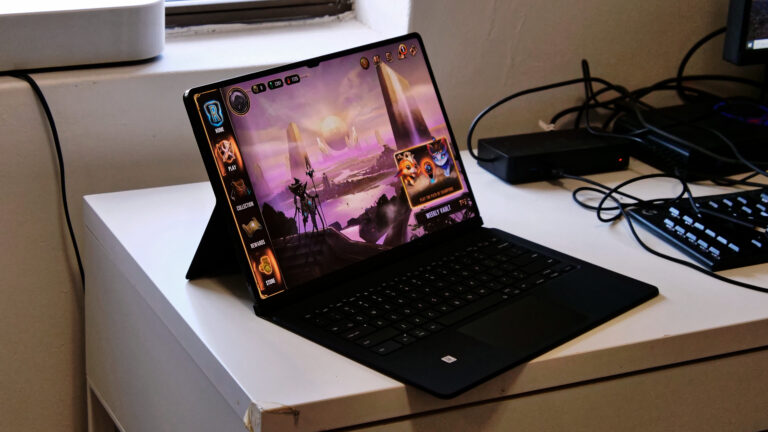
There are two ways to look at the performance offered by the Samsung Galaxy Tab S8 Ultra.
The first is in isolation. In this respect, the hardware here is as impressive as the highest spec Android devices out there. Under the hood, the Tab S8 Ultra comes kitted out with the same Snapdragon 8 Gen 1 processor seen in the flagship Galaxy S22 Ultra. This comes complemented by an extra 4GB of RAM, bringing the total to 12GB.
As detailed in the previous section, these specs are more than capable of running the kinds of applications and handling the situations that you’ll find on Android tablets.
Apps loaded fast and multitasking was a breeze, but that’s to be expected from any device running this kind of on-device compute power. Naturally and likewise, the Tab S8 Ultra smashed it when it came to performance of even the most demanding mobile gaming titles like Apex Legends Mobile and Genshin Impact.
When it came to battery life, the 11,200 mAh inside the tablet lived up to the hype. Burned down via streaming video on YouTube, the Galaxy Tab S8 Ultra took 12 hours and 20 minutes to go from 100% to zero. That's a fairly respectable amount of time for a tablet like this one, even it's short of exceptional.
However, all the above has to be considered relative to the other options. While the performance here is head and shoulders above other Android tablets and most Chromebooks, the benchmarks yielded by the Galaxy Tab S8 Ultra can't keep up with the raw performance offered in Apple's iPad Pro range.
If your needs are more everyday than enthusiast or you don't have an iPad Pro on hand to compare against the Galaxy Tab S8 Ultra, it's not hard to imagine overlooking this differential. However, if you fall into the former category, then what's on offer here is probably overkill anyway. Add to that the reality that software vendors like Adobe have been more open to developing professional-grade software for the iPad than they have Android tablets, and it's a little harder to overlook the trade-offs that come with making the Galaxy Tab S8 Ultra your premium tablet of choice.
In much the same vein as the Galaxy Note line, it feels like the Galaxy Tab S8 Ultra's hardware stretches and strains at the boundaries set by the underlying software ecosystem but stops short of breaking through them.
Samsung continues to make the best Android tablets out there, but the app ecosystem writ large remains its biggest and most intractable opponent. You can only get so far with web apps. While the presence of Samsung’s own suite of apps here is something of a value add, the reality is that the lofty ambitions of the hardware inevitably feel held back by all the usual caveats. Unless Google gets serious about attracting developers to its tablet app ecosystem or Samsung themselves roll up their sleeves and get into the software, I can't really see that changing anytime soon.
What's more, when we're talking about spending this much on a device running Android, devices that benefit from the broader software libraries on Windows and macOS also have to be considered. The case for the Galaxy Tab S8 Ultra as an alternative to an iPad Pro is one thing, but the high price here means that serious users may also want to consider laptops like the MacBook Pro or 2-in-1s like the Lenovo Yoga 9i. Minus the usual advantage of price and even with the added portability that a tablet form-factor entails, I'm left a little unconvinced that the math checks out in a way that favours Samsung's tablet.
The Galaxy Tab S8 Ultra might well be the best Android tablet money can buy, but it's still an Android tablet that costs $1,799.
Accessory pricing
If you're looking to compare the Samsung Galaxy Tab S8 Ultra against the latest iPad Pro, accessory pricing is an important part of the picture that's well worth considering.
Putting the difference in screen size to the side for a moment, the 12.9-inch iPad Pro starts at $1,649. At a glance, that gives it the edge over the $1,799 Tab S8 Ultra. However, Samsung's latest pro-grade tablet includes a stylus while Apple charges an extra $199 for the second-generation Apple Pencil. Factoring that in, and the Tab S8 Ultra does come away as a more compelling option on value.
Of course, getting the most value out of the hardware seen in both Samsung and Apple's top-of-the-line tablet options all but necessitates investing in an accessory or two. On this front, Apple has a slight edge.
Picking up an Apple Magic Keyboard for the 12.9-inch iPad Pro adds another $549 to the asking price. Samsung's cover case for the Galaxy Tab S8 comes in at $499. While Apple's accessory is 10% more expensive, the overall cost comes out to be less than what the latest Galaxy tablet with a cover keyboard demands. That's before cheaper alternatives from brands like Brydge even enter the picture.
Check out the table below for a breakdown of how the iPad Pro and Samsung Galaxy Tab S8 Ultra compare on accessory pricing.
Is the Samsung Galaxy Tab S8 Ultra worth buying?
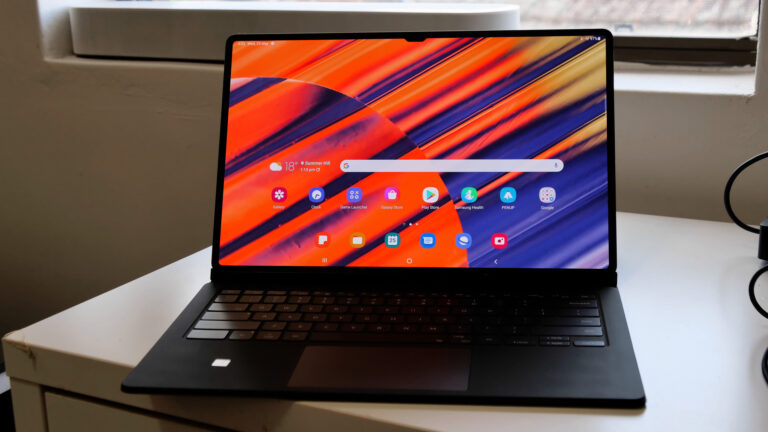
While games and high-resolution video content look delightful on a screen as nice as the one on the Tab S8 Ultra, the practical downsides associated with a form-factor this large make it hard to recommend without caveats. If you’re looking to use the Galaxy Tab S8 Ultra for heavy-duty content consumption, what’s on offer here is excessive and expensive. Even as someone who really liked the hardware here, I can't help but lean towards recommending a more modestly-priced alternative from Apple or even one of the cheaper devices in the Tab S8 range.
On the other side of things, content creators or professionals looking for an alternative to the myriad Windows and macOS based machines available at this price-point probably already know whether this is for them. If you can’t fit your workflow within the contours of what’s possible on Android tablets, the impressive hardware credentials here won’t change that.
Deciding to go all-in on a tablet this powerful and pricey remains something of a gamble, but if you're in a position where you can confidently make that shift then there's a lot to like about the Tab S8 Ultra.
More specific software needs are likely to be better met elsewhere for less money, but if you're already done the work of selling yourself on the idea of investing in an Android tablet as your main computer, then the Galaxy Tab S8 Ultra has all the right hardware to live up to the hype. It's just a shame that the software can't quite keep up with that ambition.
Samsung Galaxy Tab S8 Ultra FAQ
There are several key differences between the Samsung Galaxy Tab S8 and the Samsung Galaxy Tab S8 Ultra. Compared to the standard Tab S8, the Tab S8 Ultra boasts a bigger and better screen, an improved S-Pen with lower latency and the option of 5G connectivity. The tablet also adds a second 12-megapixel ultra-wide lens to the front-facing camera setup.
Naturally, all this doesn't come cheap. The Galaxy Tab S8 Ultra is $700 more expensive than the Galaxy Tab S8.
As with the Tab S8, the biggest difference between the middle child and the headline act of Samsung's 2022 tablet lineup is the size of the screen involved.
The Galaxy Tab S8+ has a 12.4-inch screen on it. The Galaxy Tab S8 Ultra has a 14.6-inch display.
The larger tablet also boasts a second 12-megapixel ultra-wide lens when it comes to the front-facing camera and commands a price-point that's about $300 higher than the Tab S8+.
Related Articles




